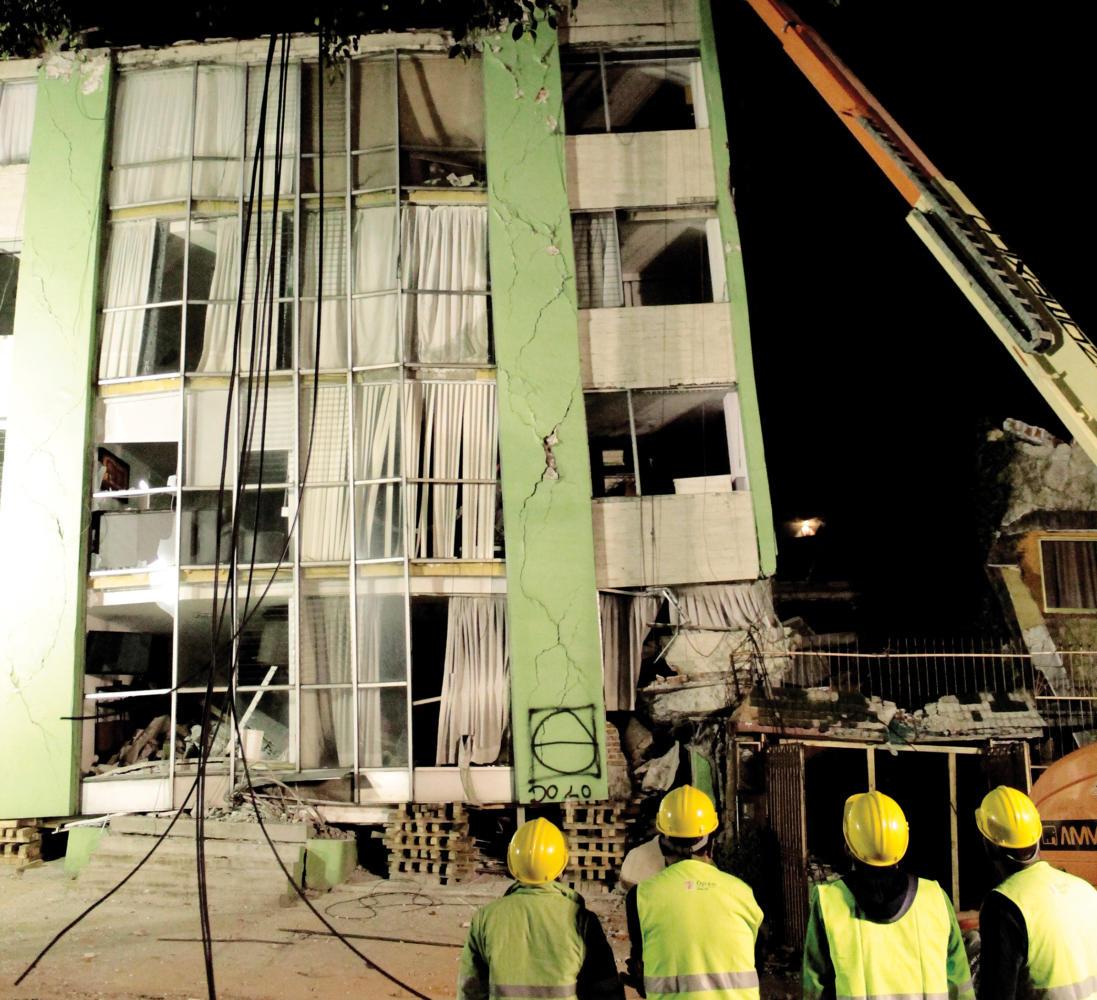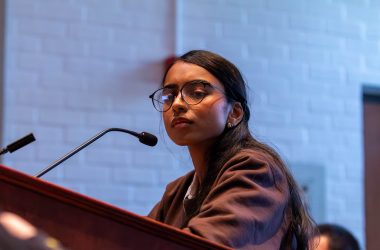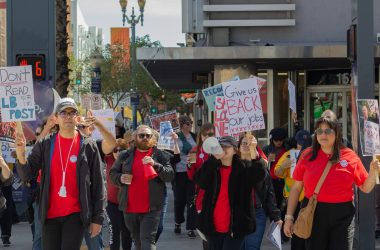MEXICO CITY — When I arrived in Mexico City on Sept. 22 for a three-day trip, I couldn’t believe what I was seeing. After being there countless times before, this beautiful place was unrecognizable.
Imagine arriving to a metropolitan city like Los Angeles, and as soon as you walk out of the airport you see a damaged eight-story apartment building with its entire wall missing, the inside of the abandoned apartments plainly visible to the naked eye.
A 7.1 magnitude earthquake shook the lives of Mexican people on Sept. 19. The death toll is approximately 300 people, including children. It came on the 32nd anniversary of a historical the 8.0 magnitude earthquake which occurred in 1985 and cost the lives of over 10,000 people.
After the quake, the government wasn’t letting any pedestrians into the danger zones. Entry was only granted to rescue teams, engineers, search and rescue and any form of public safety officials. The only way I could help was by going to Walmart in Mexico City and buying a variety of supplies to donate them to a donation center, as well as document what was going on by snapping photos of the destruction and writing this article.
The videos that surfaced on social media Tuesday, showed the shock and terror of people’s faces during and after the earthquake. Watching these videos could make your stomach shrivel up, but being there is a completely different experience.
Being that both my parents are from Mexico City, most of my extended family has been living there their whole lives. Though the thought of something happening to them was horrifying, I soon learned that my family down south was unharmed.
They were somehow better than OK — at least in comparison to the many dead and missing in the capital. I found out that in Mexico City, my grandparents and my mom’s brother were helping victims of the earthquake in any way they could. I instantly thought that I had to go help one way or another. I couldn’t just stay home through the weekend and think that everything was going to be OK, because it wasn’t and would not be for a very long time.
Meeting my family again
When I landed at the Mexico City’s international airport, dozens of volunteers from different parts of the country were pouring in with their construction helmets, safety gloves and small bags to help in any way possible. After being driven through the remains and crowds of people searching for resources, shelter or loved ones, I had arrived at my grandparent’s home at long last.
Neither of my grandparent’s homes were damaged as severely as the multistory buildings in Mexico City. The most harm done by the quake was toppled furniture, decorations gone askew and a few broken dishes in the kitchen.
According to Mexico City Mayor Miguel Angel Mancera, approximately 3,000 buildings were impacted due to the Sept. 19 tremor. That number includes buildings that collapsed during or after the earthquake, as well as those that are going to be demolished after being declared uninhabitable.
The rubbly remains
Once I left the airport and took an Uber to my paternal grandparent’s house, the driver began taking me to the different buildings that had either been damaged or collapsed. It was emotionally exhausting.
Buildings that were five to ten-stories high and built in the ‘80s and ‘90s were the most affected. Some fixtures were left debilitated due to missing walls, broken windows, missing roofs or giant cracks throughout the building, while others were pulverized.
Each building had anywhere from 20 to 100 apartments. Unfortunately, many of the people living in those buildings became homeless due to them being declared uninhabitable, or their homes collapsed and turned into rubble and dust.
The first night I was in Mexico City, a friend was able to get me access to one of the restricted streets, where four buildings and a home had been affected by the earthquake. I had no idea what to expect.
Rescue mission in action
We arrived to 241 Enrique Rebsamen, where one five-story apartment building was on the verge of collapsing. Surrounding the structure were multiple Mexican marines, navy officers, engineers and public safety officials.
A telescopic boom lift had two men elevated close to the fifth floor of the building, where they could be seen using a jackhammer to break down a wall on the top floor in order to take weight off of the building to keep it from collapsing.
After looking at the structure for a while, I realized that the front of it had a set of stairs at the very bottom that lead to nowhere. I found out that the set of stairs was the entrance to the building and that the first floor, which had completely disappeared, was the parking garage.
What shocked me the most was not the fact that the building was on the verge of collapsing, but that there was still a woman inside.
I witnessed a marine, a volunteer and a search-and-rescue member attempt to call out for the woman trapped inside the building. Everybody began raising their closed fists, which is the signal for complete silence. Generators and all lights were turned off. The silence was deafening.
After about ten minutes, no one was able to hear anything.
“Don’t worry. We will keep trying to find you,” the marine called out through the megaphone. “We are not giving up. If you have any energy at all, please keep fighting, and try your best to scream for help.”
I later discovered the following Monday, Sept. 25, that the woman trapped inside, Laura Ramos, was found dead. This wasn’t an isolated incident. Countless buildings still had people trapped inside. Families stood outside in agony, hoping that their loved ones would be found. The earthquake has so far cost the lives of approximately 300 people, including children, with dozens still missing.
Immediately after the tremor, the public began to dig through the rubble in order to rescue adults and children trapped inside the collapsing buildings.
The aftermath of aftershocks
Nine days after the earthquake, the citizens of Mexico City are still helping in any way they can.
Engineers, rescue teams from other countries, the Mexican navy and marines are still digging through the remains of the collapsed buildings in hopes of finding anyone alive.
On every corner, tents are put up with signs that read “centro de acopio,” which translates to “storage centers,” where donations such as toiletries, food, water and medicine are received and distributed to volunteers, rescue teams, victims or the public.
I write this to show a first account on what Mexico City is going through the eyes of a college student, a Mexican-American and a journalist. I didn’t want to leave the capital when my three-day trip was over, because I knew that the worst is yet to come.
Family members, volunteers and other civilians told me that Mexico City isn’t at its critical point right now. Mexico is in a global spotlight due to this recent earthquake. It is a common thought in the community that people are expecting it to get much harder because inevitably, people outside of the capital will stop seeing the news in the headlines. There will be a point where supplies will become low, volunteers will be desperately needed and people will forget what has happened and move on with their own lives.
The public needs to be reminded. Although people have a right to continue on with their day-to-day, that doesn‘t mean the help needs to stop.
I didn’t want to leave Mexico. I wish I could have stayed and helped more. I wish that I had all the money in the world so that I could give not just to the victims in Mexico — but the victims in Texas, Florida, Puerto Rico and all the other Caribbean Islands who completely lost their homes due to natural disasters.
If you don’t have the opportunity to physically go and help, there are countless organizations you can donate to such as unicefusa.org, donate.worldvision.org, Topos Mexico, etc.
Through my short trip, I learned that my life in California is fortunate compared to the lives of many people in the capital. I don’t regret taking the opportunity to aid the people of Mexico City, even if it were for a weekend.
I don’t know what plan my grandparents have in regards to helping rebuild their community. But my mom’s brother has offered his apartment to friends and coworkers who were left homeless rent free until they get back on their feet. I plan to go back in the next month or two to visit again and find any other way I can help the people who will, without a doubt, keep fighting to help themselves.








